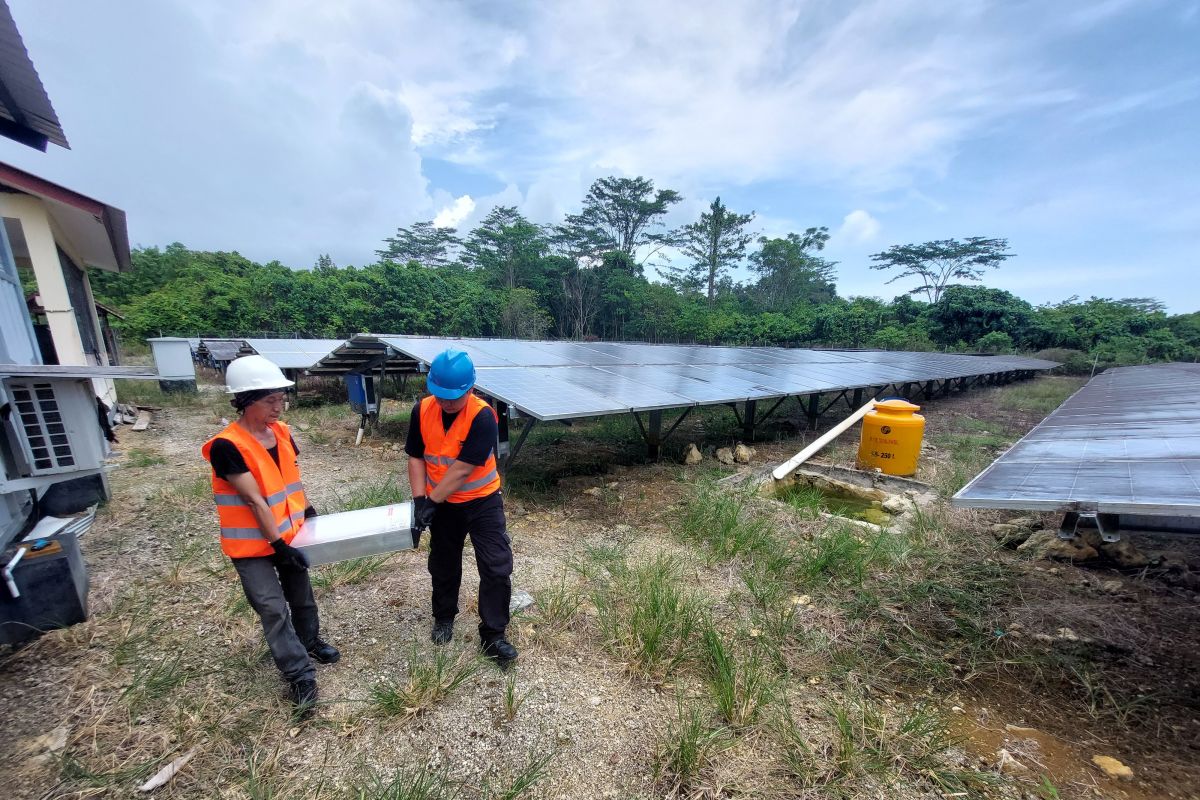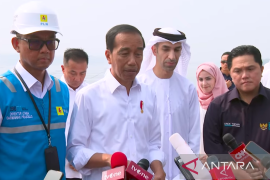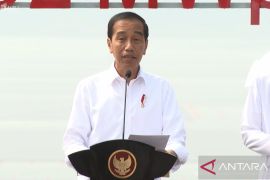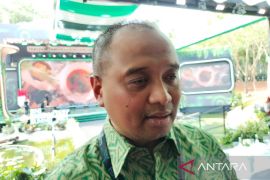According to data from PLN, as of the third quarter of this year, the national electrification ratio has reached 99.74 percent.
Of the 83,763 villages in Indonesia, 76,679 are receiving electricity supply from PLN, 4,057 are receiving power from other sources, 2,887 are using energy-efficient solar lamps, and only 140 remain to be unelectrified.
Most of the unelectrified villages lie in disadvantaged, frontier, and outermost (3T) areas in the country’s eastern regions.
At the commemoration of the 78th National Electricity Day on Friday (October 27, 2023), PLN set the target of 100 percent national electrification by 2025.
As an archipelagic state, Indonesia has been facing several obstacles in its efforts to realize equitable electricity access, such as lack of infrastructure.
In most regions, once the main village is connected to the electricity network, steps to expand power connectivity to the surrounding regions can be taken immediately.
In 3T areas, however, this is often not possible due to the difficult geographical conditions in the areas, not to mention the relatively high cost of constructing the supporting infrastructure.
Hence, the EBT-based isolated generator system can be a solution to provide people in such areas with access to electricity.
With the system, an area can receive power supply by simply hosting a single electricity hub that is neither connected to other hubs nor PLN networks, thereby minimizing costs.
In view of this, the government has continued to promote the use of EBT in Indonesia, considering that the country wields enormous alternative energy potential from sources ranging from geothermal, biomass, water, solar, wind, and ocean currents.
The effort is in line with the government’s energy transition for achieving the net-zero emissions (NZE) target by 2060.
Hybrid solar power plant
The village of Teluk Sumbang is one of the three villages in Berau District, East Kalimantan Province, that have been enjoying electricity generated by hybrid solar power plants (PLTS). Such plants integrate three power-generation systems: solar photovoltaic batteries, micro-hydro power plants, and portable generators.
So far, the hybrid PLTS has been powering up 41 public facilities and supporting the activities of over 400 families.
The development of the eco-friendly power plant is part of a project called “Off-Grid Power Plant” launched under a collaboration between Berau district government, Millennium Challenge Account Indonesia, and PT Akuo Energy Indonesia.
Teluk Sumbang Energi, the operator of the PLTS in Teluk Sumbang village, said that the power plant has a capacity of 540 kilowatt-peak (kWp) and can supply power to over 250 houses.
Currently, the operator is distributing electricity from the hybrid PLTS to a total of 207 houses in the village.
“We are offering electricity for Rp1,460 (US$0.09) per kWh (kilowatt-hour),” Badaruddin, director of Teluk Sumbang Energi, informed.
Economic impacts
The hybrid PLTS has been operating 24 hours a week for the past five years, replacing local residents’ more costly diesel-based generators that could only provide electricity for four to five hours a day.
The electricity system in Teluk Sumbang Village has had a positive impact on the economy of its inhabitants, the majority of whom are fishermen and plantation farmers.
One of the villagers, Sumiati (50), said that access to electricity has helped her culinary business.
By utilizing electric tools, she has been able to double the production of her snack products.
“Now, all the production tools are electric. The existence of electricity here makes me more enthusiastic about making my cake products,” she said.
Sumiati, who serves as the treasurer of Teluk Sumbang Energi, informed that each month, more and more people are applying for electricity connections for their homes.
Meanwhile, Teluk Sumbang Village Head Kamaruddin said that access to electricity and cold storage has made it more convenient for fishermen to store their catch and extend its freshness.
However, he expressed the hope that the government would succeed in providing the village with electricity generated by PLN since the hybrid PLTS in the village has limited capacity and is facing a decline in battery power.
Meanwhile, the number of villagers using electricity has continued to increase, he highlighted.
During the battery replacement process, the PLTS will not be able to generate power for about three days, thereby cutting off the electricity supply to various tools and facilities, including the cold storage used by the fishermen.
In 2020, a component of the PLTS was damaged, forcing the villagers to once again rely on their diesel-based generators.
Villagers running tourism and accommodation businesses were hit hard by the issue as tourists were hesitant to stay longer in the village.
“Since the end of the COVID-19 pandemic, we have been making all-out efforts to promote the tourism sector, which constitutes this region’s potential. However, unstable electricity and internet networks could negatively affect the number of tourist visits,” Kamaruddin said.
The problem needs to be addressed promptly so that people can constantly enjoy powered-up environments and develop their businesses.
The government and PLN are expected to succeed in achieving the target of total electrification of Indonesia by optimizing EBT and taking the country closer to realizing the NZE target in the process.
Related news: Innovation, creativity key for vehicle electrification: minister
Related news: Jakarta seeks to improve air quality through bus electrification
Editor: Rahmad Nasution
Copyright © ANTARA 2023












